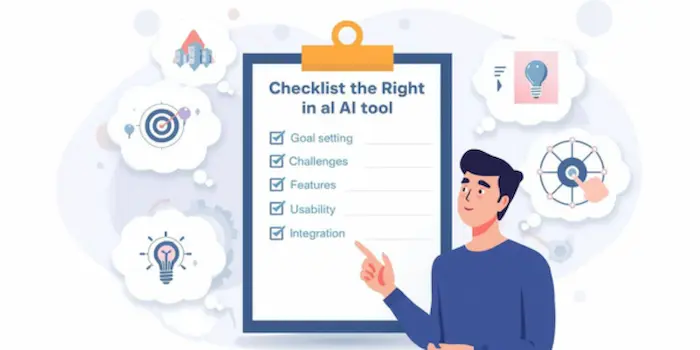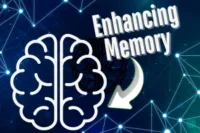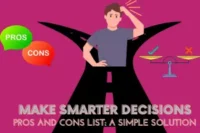AI Tools for Self-Improvement: The 1 Secret Your Peers Use to Transform Their Lives
Published: 09/09/2025
Have you ever felt like you’re stuck in a cycle of self-improvement attempts that lead nowhere? Perhaps you’ve tried various strategies—journaling, habit tracking, or productivity apps—but still find yourself overwhelmed or lacking consistent progress. It’s frustrating when the tools and methods meant to help you only add to the noise.
You’re not alone. Many individuals face the same challenges, seeking a way to break free from this cycle and achieve meaningful personal growth. The key lies not in accumulating more tools or information but in adopting a strategic approach that transforms how you engage with self-improvement.
In this article, we’ll introduce you to a powerful strategy that goes beyond merely listing AI tools. We’ll reveal the one core approach that your most successful peers are using to accelerate their personal development. This isn’t about finding the perfect tool; it’s about shifting your mindset and leveraging AI as a proactive partner in your growth journey. |
By the end of this guide, you’ll understand how to use AI not just as a passive assistant but as an active collaborator in your self-improvement efforts. You’ll discover how to move from feeling overwhelmed to taking confident, informed steps toward your goals.
What’s the One Secret to Unlocking Your Potential with AI?
The secret to unlocking your potential with AI isn’t about finding the right tool or app to download. It’s not about using the latest, shiniest gadget or the most popular AI-powered software. The true key to success is a shift in mindset—a change in how you approach self-improvement. By moving beyond the basic functions of AI, like scheduling or task management, and using it as a true personal growth partner, you can unlock potential you never realized you had.
Beyond Simple Productivity: The Shift in Mindset
Many individuals approach AI as a mere tool for efficiency—something to automate tasks, manage schedules, or draft emails. While these applications are valuable, they represent only the surface of AI’s potential. The true power of AI lies in its ability to serve as a partner in your personal development journey.
This shift from using AI for basic productivity to leveraging it for personal growth requires a change in mindset. Instead of viewing AI as a task manager, consider it a collaborator that can challenge your thinking, provide personalized learning experiences, and support your skill development.

For instance, platforms like Mindsera offer AI-powered journaling that not only tracks your thoughts but also provides insights into your emotional patterns, helping you build emotional intelligence over time.
By adopting this mindset, you move beyond simply completing tasks to actively engaging in your growth process, making AI a central figure in your journey toward self-improvement.
The Core of the Strategy: From Passive to Active
The secret to unlocking your potential with AI isn’t about passively receiving information; it’s about actively engaging with AI to enhance your cognitive and emotional capabilities.
Now, here’s where the core of the strategy comes in: moving from passive to active. Most people use AI tools for passive tasks — things like automating reminders, organizing emails, or scheduling meetings. While these tasks are helpful, they’re not unlocking your full potential.
The real breakthrough comes when you use AI to actively engage in your growth process. For example:
- Use AI to personalize your learning: AI can analyze your strengths and weaknesses, offering personalized recommendations or resources tailored specifically to your growth path. This takes the guesswork out of self-improvement and helps you focus on areas that truly matter.
- Leverage AI to enhance critical thinking: Instead of just searching for answers, you can use AI tools to challenge your thoughts, provide different perspectives, and help you think through complex problems. It’s like having a mentor who is always ready to push you to think deeper.
- Use AI for skill development: AI tools can help you identify areas where you can improve, then provide structured learning plans to help you develop those skills. Whether it’s mastering a new language, coding, or improving your communication skills, AI can tailor a journey to match your exact needs.
This strategy isn’t about just saving time — it’s about making smarter use of your time. When you actively use AI to work on personal development and make thoughtful decisions, you’ll find yourself moving forward in ways you never thought possible. It’s about turning AI into an active partner in your journey, not just a passive assistant.
The Essential AI Tools for Your Self-Improvement Stack
To effectively integrate AI into your personal development journey, it’s essential to select tools that align with your specific goals. Below are curated AI-powered tools categorized to enhance various aspects of self-improvement:
Mindset & Mental Clarity Tools
Developing emotional intelligence and maintaining mental clarity are foundational to personal growth. AI tools can assist in these areas by providing personalized insights and support:
- Wysa: An AI-driven chatbot offering emotional support through Cognitive Behavioral Therapy (CBT) techniques. It provides mood tracking and daily reflections, helping users manage stress and anxiety. (Meditate Mate)
- Youper: Utilizes AI to deliver personalized therapy sessions based on CBT, Acceptance and Commitment Therapy (ACT), and Dialectical Behavior Therapy (DBT) techniques. It offers mood tracking and self-reflection prompts. (Meditate Mate)
- Calm AI: Integrates AI to offer guided meditation, relaxation exercises, and sleep stories, promoting mental well-being and clarity. (ChatAI)

Goal Setting & Habit Formation Tools
Establishing and maintaining goals can be challenging. AI tools provide structured approaches to habit formation and goal tracking:
- Rocky.ai: Offers daily micro-coaching sessions to help users design their day, reflect on priorities, and build sustainable habits. (rocky.ai)
- Reclaim.ai: An AI-powered habit tracker that schedules routines around existing commitments, ensuring consistent progress toward goals. (Reclaim)
- Afforai: Assists in organizing and streamlining research and writing processes, aiding in goal achievement through efficient task management. (Reddit)
Learning & Skill Development Tools
Continuous learning is key to personal growth. AI tools can personalize and accelerate the learning process:
- Preply: Combines AI with real human tutors to deliver personalized language learning experiences, enhancing engagement and effectiveness. (Axios)
- Duolingo with AI Features: Offers adaptive language learning paths, adjusting to the user’s proficiency and learning pace.
- Unschooler.me: Provides AI-powered personalized video courses to help users learn new skills and identify career goals.

Creativity & Critical Thinking Tools
Enhancing creativity and critical thinking can lead to innovative problem-solving. AI tools facilitate these cognitive processes:
- Parlay: Generates thought-provoking discussion prompts around current events or academic topics, fostering deep thinking and debate. (mepli.gse.harvard.edu)
- MathGPTPro: An AI learning platform that delivers personalized, interactive experiences, encouraging critical thinking through Socratic questioning.
- Udemy Role Play: Offers AI-powered simulations to assist professionals in enhancing workplace communication, leadership, and problem-solving skills. (The Times of India)
Integrating these AI tools into your daily routine can provide structured support, personalized insights, and efficient tracking, facilitating meaningful progress in your self-improvement journey.
Background: Sarah, a busy professional and lifelong learner, was struggling to maintain consistency in her personal development goals. Despite using productivity apps, she still found it challenging to keep up with her reading list and learn new skills.
Challenge: Sarah wanted to master a new language and read more books to stay up-to-date with industry trends. However, she was often overwhelmed by the volume of material and lacked the motivation to stick to a schedule.
Solution: Sarah turned to AI tools to help streamline her learning process. She integrated Duolingo for language learning and SMMRY for summarizing articles.
- Duolingo: An AI-powered language learning app that adapts to her pace and provides personalized lessons. The app uses AI to track her progress, offering more advanced lessons as she becomes proficient.
- SMMRY: An AI tool that summarizes long articles and books into bite-sized chunks, allowing her to extract key insights quickly without feeling overwhelmed by the content.
Outcome: Within a month, Sarah completed her language lessons for the first time and read 5 industry-related books. The combination of AI-driven personalized learning and summarized content gave her the tools to meet her goals without burning out.
This example demonstrates how AI tools, when used strategically, can make a significant impact on achieving personal growth goals. By shifting from passive use to active integration of AI, Sarah was able to effectively break down complex tasks and stay on track.
Actionable Steps to Start Your AI-Powered Journey Today
Embarking on your AI-assisted self-improvement journey doesn’t have to be overwhelming. By taking deliberate steps, you can seamlessly integrate AI tools into your daily routine, making personal growth more structured and achievable.
How to Choose the Right Tool for You
Selecting the appropriate AI tool is crucial for aligning with your personal goals. Here’s a simple checklist to guide your decision:
- Identify Your Primary Goal: Are you aiming to improve your emotional well-being, establish consistent habits, acquire new skills, or enhance creativity?
- Assess Your Current Challenges: Do you struggle with procrastination, lack of motivation, or difficulty in tracking progress?
- Evaluate Tool Features: Does the tool offer personalized insights, progress tracking, or interactive prompts that cater to your needs?
- Consider Usability: Is the tool user-friendly and compatible with your devices?
- Check for Integration: Does it integrate well with other tools or platforms you currently use?

By answering these questions, you can pinpoint a tool that aligns with your objectives and preferences.
A 30-Day Blueprint for an AI-Powered Habit
Building a new habit with the assistance of AI can be both effective and sustainable. Here’s a step-by-step plan to guide you:
Week 1: Foundation
- Day 1: Set a clear, specific goal (e.g., “I will meditate for 10 minutes daily”).
- Day 2-3: Choose an AI tool that supports your goal (e.g., a meditation app with AI-guided sessions).
- Day 4-7: Begin using the tool daily, tracking your progress and noting any challenges.
Week 2: Integration
- Day 8-10: Incorporate the habit into your daily routine at a consistent time.
- Day 11-14: Use the AI tool’s features to enhance your practice (e.g., personalized reminders, progress analytics).
Week 3: Reflection
- Day 15-17: Review your progress and adjust your approach if necessary.
- Day 18-21: Seek feedback from the AI tool and implement suggestions for improvement.
Week 4: Consolidation
- Day 22-24: Continue the habit, focusing on consistency.
- Day 25-28: Reflect on the benefits and challenges experienced.
- Day 29-30: Plan for maintaining the habit beyond the 30 days.
By following this blueprint, you can effectively establish and sustain a new habit with the support of AI tools.
Master Prompts for Better Results (Expert Tips)
Crafting effective prompts is essential for maximizing the benefits of AI tools. Drawing from Bernard Marr’s insights, here are five powerful prompts to enhance your self-improvement efforts:
- Goal Achievement Strategy:
“Act as an expert strategist and create an actionable plan, along with a schedule and timetable, for me to achieve my goal of [insert goal] by [insert date]. Provide a detailed strategy and timetable, breaking the process down into manageable steps.” (Bernard Marr) - Learning a New Skill:
“Act as a personal tutor. Provide me with a clear, concise primer covering the basic concepts and foundational knowledge of [insert skill]. Explain the key concepts in simple language and include a list of recommended resources for further reading.” (Bernard Marr) - Overcoming Procrastination:
“Act as a life coach and come up with ways for me to overcome my procrastination habits. Ask me questions to understand my situation and provide actionable strategies.” (Bernard Marr) - Improving Communication Skills:
“Act as an interpersonal communications expert and advise me on how to communicate more effectively with people. Ask me questions to establish my strengths and weaknesses, then give me personalized advice.” (Bernard Marr) - Writing a Self-Improvement Journal:
“Please help me keep a journal of my self-improvement journey. When I want to make an entry, ask me to answer a question that explores my progress toward my goals.” (Bernard Marr)
By utilizing these prompts, you can guide AI tools to provide tailored support, enhancing your personal development journey.
Expert Advice: Common Mistakes to Avoid
Embarking on the journey of self-improvement with AI tools can be transformative. However, to truly benefit, it’s essential to navigate common pitfalls that many encounter. Here’s a breakdown of three prevalent mistakes and how to avoid them:
Mistake #1: The Shiny Object Syndrome
The Trap: In the rapidly evolving world of AI, it’s tempting to jump from one new tool to another, believing each promises the key to personal growth.
The Reality: Constantly switching tools can lead to fragmented efforts and a lack of consistent progress. Instead of mastering one tool, you may find yourself overwhelmed and directionless.
The Solution: Commit to a single AI tool that aligns with your primary goal. Dedicate time to learn its features thoroughly and integrate it into your daily routine. Consistency and mastery will yield better results than constant novelty.
Mistake #2: Expecting a Magic Bullet
The Trap: Believing that an AI tool will automatically solve all your challenges without active participation.
The Reality: AI tools are designed to assist and augment human effort, not replace it. Without your active engagement—such as setting clear goals, providing feedback, and reflecting on progress—the tool’s effectiveness diminishes.
The Solution: Approach AI as a collaborative partner. Set specific objectives, interact with the tool regularly, and adjust your strategies based on the insights it provides. Your initiative combined with the tool’s capabilities will drive meaningful change.
Mistake #3: Ignoring the Data
The Trap: Overlooking the insights and analytics provided by AI tools, assuming they aren’t crucial to the self-improvement process.
The Reality: AI tools often offer valuable data, such as mood patterns, productivity trends, or habit consistency. Disregarding this information means missing opportunities for self-awareness and targeted improvement.
The Solution: Regularly review the data and insights your AI tool provides. Use this information to identify patterns, adjust behaviors, and make informed decisions about your growth journey.
By being aware of these common mistakes and proactively addressing them, you can harness the full potential of AI tools to support your self-improvement endeavors.
Conclusion: Your Next Step Towards a Better You
Embarking on a journey of self-improvement with AI tools isn’t about adopting the latest app or trend. It’s about shifting your mindset—from using AI merely as a productivity enhancer to viewing it as a personal growth partner. By actively engaging with AI for tasks like critical thinking, personalized learning, and habit formation, you can unlock your full potential.
Remember, the secret isn’t in the tools themselves but in how you use them. A select few well-chosen tools, when integrated thoughtfully into your daily routine, can lead to significant, lasting change.
Choose one AI tool from the list provided that aligns with your current goal—be it enhancing focus, building a new habit, or learning a new skill. Commit to using it daily for the next 30 days. Document your experiences, reflect on your progress, and adjust as needed. This focused approach will help you build momentum and achieve meaningful results.
We’d Love to Hear from You
Which AI tool are you planning to integrate into your routine? What personal growth goal are you focusing on? Share your thoughts and experiences in the comments below. Your journey could inspire others to take their first step toward self-improvement.
Common Questions About AI for Personal Development
Many AI tools offer free versions with essential features. For example, Duolingo provides free language learning, and journaling apps often have free tiers. These can be a great starting point before exploring premium options.
While AI can provide valuable insights and support, it doesn’t replace the nuanced understanding and empathy of a human life coach. AI serves as a supplementary tool, offering data-driven assistance alongside human guidance.
Start by selecting one AI tool that aligns with your self-improvement goal. Dedicate time each day to interact with it, gradually increasing usage. Reflect weekly on your progress and adjust your approach as needed to ensure consistent integration.
Yes, AI-powered habit coaches provide personalized feedback, reminders, and progress tracking, helping you establish and maintain new habits. For example, apps like Rocky.ai offer daily micro-coaching sessions to support habit formation.
Establish a routine that incorporates AI tools into daily activities. Set achievable goals, track your progress, and adjust your strategies based on the feedback from the tools. Consistency is key to realizing the benefits of AI in personal growth.
Yes, platforms like Duolingo utilize AI to tailor lessons to your proficiency level, ensuring a personalized learning experience. They adjust the difficulty based on your performance, promoting steady progress in language acquisition.
AI productivity tools are software applications that use artificial intelligence to automate tasks, streamline workflows, and assist with decision-making processes. They can help you manage your time more effectively, reduce manual effort, and improve overall productivity.
To select the appropriate AI tool, consider the following steps:
- 1. Identify Your Goal: Determine what you want to achieve—be it improving writing, managing tasks, or learning a new skill.
- 2. Research Available Tools: Look for tools that align with your goal and read user reviews to gauge effectiveness.
- 3. Evaluate Features: Ensure the tool offers the features you need, such as integration with other apps or customization options.
- 4. Consider Pricing: Check if the tool fits within your budget, considering both free and paid options.
- 5. Test the Tool: Many AI tools offer free trials—use them to assess usability and functionality.
AI tools like Wysa and Youper use algorithms to offer personalized emotional check-ins and insights, helping you increase self-awareness and manage emotions. These tools integrate AI with therapeutic techniques.
Overloading with tools: Using too many AI tools simultaneously can lead to confusion and inconsistency.
Passive usage: Relying solely on AI without active engagement diminishes its effectiveness.
Ignoring feedback: Disregarding insights and data provided by AI tools can hinder progress.
AI tools analyze your learning patterns and adjust content based on your progress. Apps like Duolingo and Skillshare use AI to tailor lessons, making learning more effective.

- Be Respectful
- Stay Relevant
- Stay Positive
- True Feedback
- Encourage Discussion
- Avoid Spamming
- No Fake News
- Don't Copy-Paste
- No Personal Attacks



- Be Respectful
- Stay Relevant
- Stay Positive
- True Feedback
- Encourage Discussion
- Avoid Spamming
- No Fake News
- Don't Copy-Paste
- No Personal Attacks





